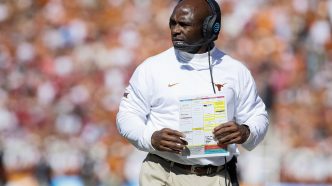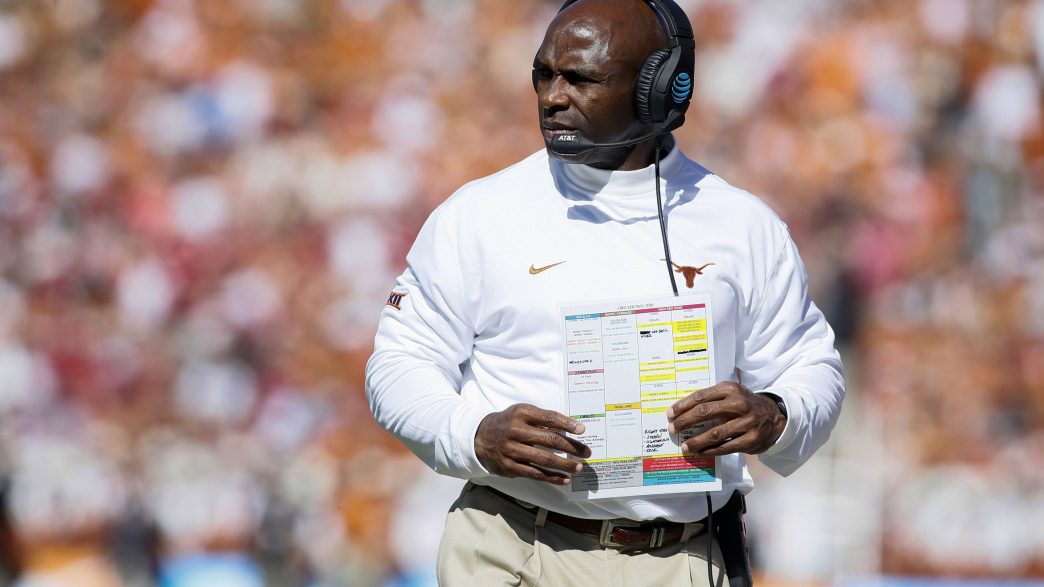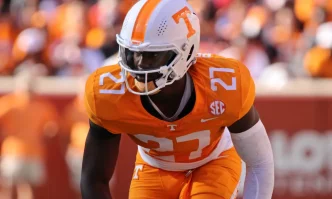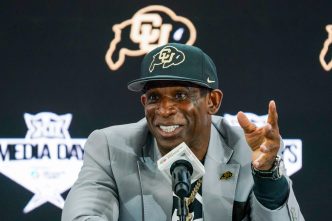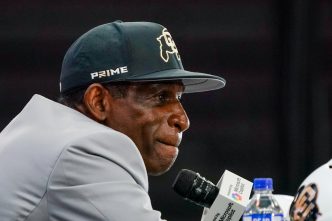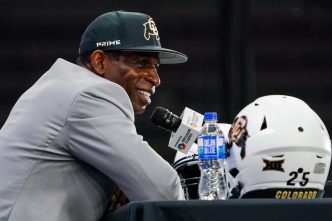Every college football program dreams of landing a head coach who can alter its fortunes and steer the team toward national glory. With that aspiration in mind, CBS Sports highlighted the 25 best coaching hires in the 21st century, prominently featuring Alabama’s acquisition of Nick Saban in 2006. Over an impressive 17 seasons in Tuscaloosa, Saban didn’t just guide the Crimson Tide; he dominated, capturing six national championships and nine SEC titles, solidifying his status as a legendary figure in college football.
However, not every hire has turned into a triumphant success story. In fact, many coaching decisions leave fans grimacing, still haunted by the missteps that derailed their programs. That’s why we compiled a list of what we believe are the 25 worst coaching hires of this century. These are the moves that not only fell flat but also had fans questioning the decision-makers and their vision for the program.
When evaluating the worst coaching hires, we considered several factors beyond just win-loss records. Key questions guided our analysis: Did the hire make sense based on the previous coach’s success? Did the program have the requisite resources to compete effectively? And crucially, where did it go wrong?
With those considerations in mind, here’s our look at the 25 worst coaching hirings since 2000.
Honorable Mentions – 10 Who Just Missed the Cut:
This list includes some notable names who faced challenges but ultimately did not make the final 25: Herm Edwards (Arizona State), John L. Smith (Arkansas), Paul Pasqualoni (Connecticut), Ted Roof (Duke), Todd Graham (Hawaii), Larry Porter (Memphis), Bill Callahan (Nebraska), Scott Frost (Nebraska), Jimmy Lake (Washington), and Paul Wulff (Washington State).
25. Mike Locksley, New Mexico
Locksley, a head coach with ambitions, jumped at an opportunity that turned out to be a poor fit geographically. His tenure was marred by disastrous seasons, including back-to-back 1-11 records, alongside off-field controversies. However, he found redemption at Maryland, achieving three consecutive bowl victories from 2021 to 2023.
24. Steve Addazio, Colorado State
The Addazio hire raised eyebrows from the get-go. Despite success at Boston College, he wasn’t a top candidate until Urban Meyer recommended him. The definitive moment of his tenure was a swift ejection during a 52-10 loss against Nevada in his final game.
23. Mike Riley, Nebraska
While Riley’s record wasn’t the worst, the context surrounding his hiring makes it sting. When Nebraska dismissed Bo Pelini—who had consistent success—the expectation was for someone who could elevate the program, not a coach with a track record of just one nine-win season in five years. Ultimately, his era marked the beginning of an eight-year bowl drought for a once-great program.
22. Geoff Collins, Georgia Tech
Collins arrived with a solid background from Temple, but his decision to abandon Paul Johnson’s triple-option scheme backfired. The result? A lack of success that never matched the hype he brought with him. His inability to win more than three games in a season proved detrimental, while his successor found success almost immediately.
21. Chris Ash, Rutgers
Rutgers is known for its challenges, but Ash’s tenure was particularly tough. Winning only three Big Ten games in four seasons, including an embarrassing loss to Buffalo, Ash’s time came to be defined by a lack of progress. Thankfully, his struggles eventually led back to Greg Schiano, who knows how to win in Piscataway.
20. Charlie Strong, Texas
The idea of hiring Strong made sense after his impressive stint at Louisville, but he couldn’t translate that success at Texas. The Longhorns endured three disappointing seasons under his leadership, including a shocking overtime loss to a Kansas team that had been reeling for years. His legacy is now overshadowed by the resurgence of Texas under Steve Sarkisian.
19. Bryan Harsin, Auburn
Auburn’s bold investment of over $21 million to part ways with Gus Malzahn paved the way for Harsin’s arrival. While his debut season included a noteworthy win against a top-ten opponent, he ultimately struggled to connect with the Auburn community, leading to a rapid decline and a quick exit after just 21 games.
18. Karl Dorrell, Colorado
After several years away from college, Dorrell’s hiring caught many off guard. Though he managed a decent first year with Mel Tucker’s recruits, things went south quickly, culminating in a rough start to his second season that prompted his dismissal.
17. Kevin Sumlin, Arizona
After the intense high-pressure environment of coaching Johnny Manziel, Sumlin’s move to Arizona proved disastrous. His inability to produce a winning season, capped off by a 70-7 loss to rival Arizona State, sealed his fate as head coach.
16. Mike Jinks, Bowling Green
Hoping to replicate previous offensive success, Bowling Green’s administration mistakenly hired Jinks, who had zero coordinator experience. Following a solid season under Dino Babers, Jinks struggled and was ultimately let go midway through his third year.
15. Willie Taggart, Florida State
Florida State’s decision to grab Taggart seemed reasonable at first, given his local ties and prior successes. However, his short tenure ended in chaos, largely due to his hurried attempts to manage a slipping program, culminating in an early dismissal and costly financial ramifications.
14. Darrell Hazell, Purdue
When Purdue moved on from Danny Hope, they expected more than Hazell could deliver. His time in West Lafayette was rife with losses—including an abysmal first season that featured just one victory, highlighting a lack of progress.
13. Jon Embree, Colorado
Embree’s ties to the program didn’t translate into success. With no prior head coaching experience, he inherited a troubled program and recorded only one win in his second season before being shown the door.
12. Ryan Walters, Purdue
Tasked with taking over after a successful era under Jeff Brohm, Walters fell short. Despite a few wins in his first season, the subsequent year was marked by a disastrous record, cementing his place on this list.
11. Greg Robinson, Syracuse
Known for his optimism, Robinson took over a program coming off a strong past. However, his stewardship led to an abysmal 1-10 season, putting Syracuse in a tailspin that they struggled to recover from.
10. Derek Dooley, Tennessee
Though he had a notable pedigree, Dooley failed to deliver at Tennessee, overseeing two consecutive losing seasons which were a first for the program in over a century. His struggles against rivals compounded the disappointment.
9. Ron Turner, FIU
Turner’s hiring was perceived as a poor decision from the outset, particularly after he replaced Mario Cristobal. Predictably, he couldn’t replicate the previous success and was dismissed following an inept start.
8. Les Miles, Kansas
A surprising move given his time away from college football, Miles’ return was characterized by struggles and ultimately overshadowed by serious allegations. The program suffered significantly during his tenure, marking a troubling chapter.
7. Jeremy Pruitt, Tennessee
Pruitt’s appointment came amidst controversy, and he never managed to reach the expectations set for him. His leadership resulted in NCAA scrutiny, with violations that led to severe penalties for the program.
6. Ty Willingham, Washington
After a disappointing stint at Notre Dame, Willingham’s second chance with Washington unraveled quickly, culminating in an 0-12 season that underscored the difficulties he faced leading the program.
5. Charlie Weis, Kansas
Weis’ brief Kansas tenure was marred by a poor win-loss record and misguided recruitment strategies. The fallout from his approach left the program in disarray and took years to recover.
4. Chad Morris, Arkansas
Hired with high hopes, Morris never found his footing and finished with a notably woeful SEC record. The belief that his success at SMU would translate to Arkansas quickly proved misguided.
3. Ellis Johnson, Southern Miss
Johnson inherited a successful program but led them straight to an infamous winless season. His hiring was a miscalculation, and the aftermath was felt for years as the program struggled to recover.
T-1. Mike Price, Alabama and Michael Haywood, Pittsburgh
No coaching hire can be viewed as more disastrous than the need to fire a coach before he ever stepped foot on the field. Price’s inappropriate behavior before his inaugural game at Alabama made headlines, while Haywood faced legal issues that derailed his tenure almost immediately at Pittsburgh.
Alabama was left scrambling, eventually promoting Mike Shula, who managed to provide stability, yet his reign was often marked by unfulfilled potential. The lessons from these coaching misfires illustrate the critical importance of strategic decision-making in college football, where every hire plays a pivotal role in a program’s success or failure.

